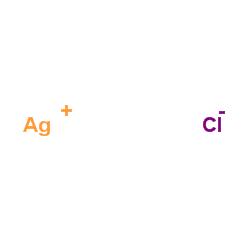Real time measurement of myocardial oxygen dynamics during cardiac ischemia-reperfusion of rats.
Gi-Ja Lee, Seung Ki Kim, Sung Wook Kang, Ok-Kyun Kim, Su-Jin Chae, Samjin Choi, Jae Ho Shin, Hun-Kuk Park, Joo-Ho Chung
Index: Analyst 137(22) , 5312-9, (2012)
Full Text: HTML
Abstract
Because oxygen plays a critical role in the pathophysiology of myocardial injury during subsequent reperfusion, as well as ischemia, the accurate measurement of myocardial oxygen tension is crucial for the assessment of myocardial viability by ischemia-reperfusion (IR) injury. Therefore, we utilized a sol-gel derived electrochemical oxygen microsensor to monitor changes in oxygen tension during myocardial ischemia-reperfusion. We also analyzed differences in oxygen tension recovery in post-ischemic myocardium depending on ischemic time to investigate the correlation between recovery parameters for oxygen tension and the severity of IR injury. An oxygen sensor was built using a xerogel-modified platinum microsensor and a coiled Ag/AgCl reference electrode. Rat hearts were randomly divided into 5 groups: control (0 min ischemia), I-10 (10 min ischemia), I-20 (20 min ischemia), I-30 (30 min ischemia), and I-40 (40 min ischemia) groups (n = 3 per group, respectively). After the induction of ischemia, reperfusion was performed for 60 min. As soon as the ischemia was initiated, oxygen tension rapidly declined to near zero levels. When reperfusion was initiated, the changes in oxygen tension depended on ischemic time. The normalized peak level of oxygen tension during the reperfusion episode was 188 ± 27 in group I-10, 120 ± 24 in group I-20, 12.5 ± 10.6 in group I-30, and 1.24 ± 1.09 in group I-40 (p < 0.001, n = 3, respectively). After 60 min of reperfusion, the normalized restoration level was 129 ± 30 in group I-10, 88 ± 4 in group I-20, 3.40 ± 4.82 in group I-30, and 0.99 ± 0.94 in group I-40 (p < 0.001, n = 3, respectively). The maximum and restoration values of oxygen tension in groups I-30 and I-40 after reperfusion were lower than pre-ischemic values. In particular, oxygen tension in the I-40 group was not recovered at all. These results were also demonstrated by TTC staining. We suggest that these recovery parameters could be utilized as an index of tissue injury and severity of ischemia. Therefore, quantitative measurements of oxygen tension dynamics in the myocardium would be helpful for evaluation of the cardioprotective effects of therapeutic treatments such as drug administration.
Related Compounds
| Structure | Name/CAS No. | Molecular Formula | Articles |
|---|---|---|---|
 |
Silver chloride
CAS:7783-90-6 |
AgCl |
|
Direct conversion of silver complexes to nanoscale hexagonal...
2013-09-21 [Phys. Chem. Chem. Phys. 15(35) , 14611-5, (2013)] |
|
Mixed-valence metal oxide nanoparticles as electrochemical h...
2012-12-26 [J. Am. Chem. Soc. 134(51) , 20783-7, (2012)] |
|
Shewanella oneidensis MR-1 chemotaxis proteins and electron-...
2012-12-01 [Biochem. Soc. Trans. 40(6) , 1167-77, (2012)] |
|
Sensitivities of key parameters in the preparation of silver...
2011-01-01 [Sensors (Basel.) 11(8) , 8072-84, (2011)] |
|
Synthesis and characterization of fumaric acid functionalize...
2013-04-01 [J. Nanosci. Nanotechnol. 13(4) , 2826-34, (2013)] |